Guide to the Lofoten Islands – Norway Travel Tips
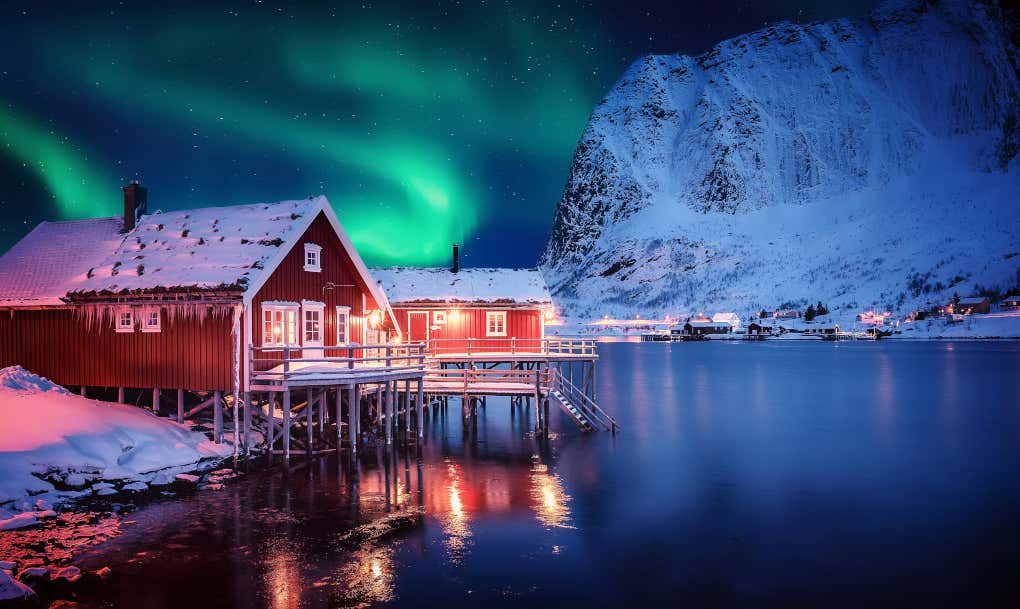
The Lofoten Islands are an archipelago in northern Norway, in the Arctic Circle. These paradisiacal islands feature mountains, fjords, picturesque bays dotted with wooden cottages, and mild temperatures as the Gulf Stream surrounds them. If you’re looking for a place where you’ll be surrounded by nature and tranquillity, you’ll love our guide to the Lofoten Islands!
Here at Civitatis, we’re big fans of its charming fishing villages and delicious, fish-based cuisine that includes plenty of cod dishes.
The archipelago is made up of seven main islands: Austvågøy, Gimsøy, Vestvågøy, Flakstad, Moskenes, Vaerøy and Røst. Let’s see what they have to offer!
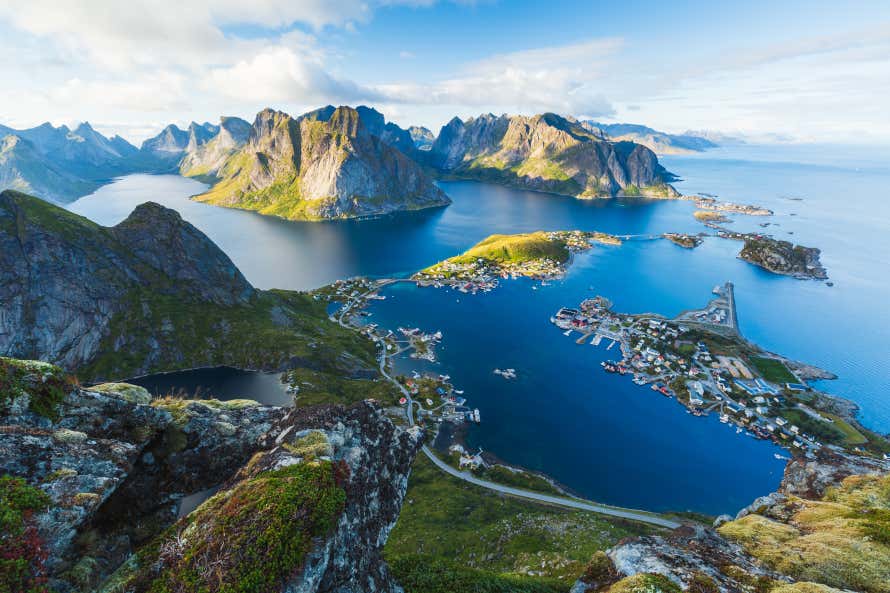
When’s the best time to visit the Lofoten Islands?
The Lofoten Islands have a lot to offer depending on the time of year and the traveller’s priorities, so there isn’t one period or season that’s the best time to visit the archipelago.
In winter, the Lofoten Islands are covered with snow. This is the best time of year to visit if you’d like to see the Northern Lights and spot humpback whales. Winter is also the low season, so you’ll find lower prices. However, the downside of travelling during this time of year is that daylight hours are shorter and temperatures are lower (between 5 and -5 degrees Celsius).
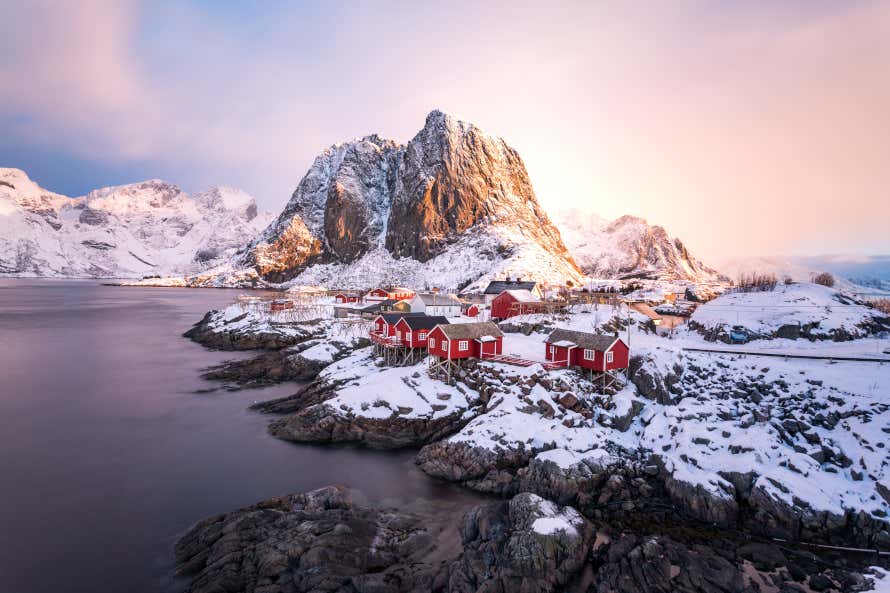
On the other hand, if you visit the Lofoten Islands in summer, there’ll be no snow or Northern Lights, but there will be the natural phenomenon of the midnight sun. The weather and temperatures are more pleasant, as there are fewer rainy days, making hikes a possibility. It’s also high season, so it’ll be harder to find accommodation or parking in some places.
In spring and autumn, there’s an adequate amount of daylight hours, and you may also get to see the Northern Lights (this applies more to autumn and less to spring). Snow can also be seen on some days, although in autumn, it’s rainier and windier. The wind at the Lofoten Islands is a drawback, as it can be very strong and can cause temperatures to drop considerably.
How do I get to the Lofoten Islands?
You can get to the Lofoten Islands by sea, air and land. The archipelago has a network of underwater tunnels and bridges connecting the islands to the mainland and to each other. On the island of Austvågøy, you’ll find Svolvær, the town where many of the Lofoten Islands’ driving routes start.
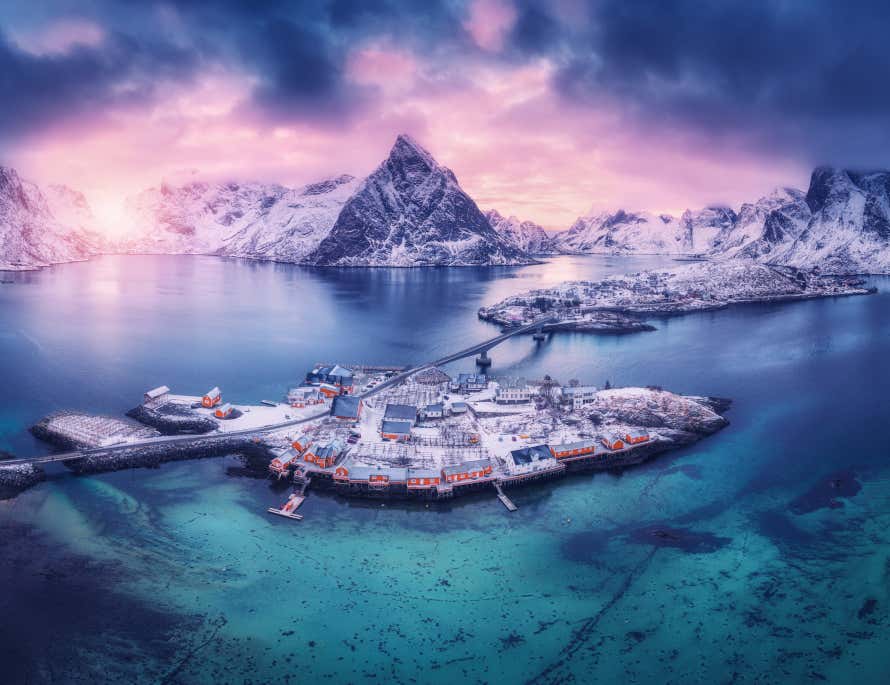
Getting there by sea is convenient, as you can take the ferry from Bodø to Moskenes or Svolvær. In winter (the low season), ferries are less frequent. The journey takes between 3 and 4 hours and costs between 20 and 30 euros.
Flying to the Lofoten Islands is also an option, but this costs a bit more. In this case, you’ll need to take three flights: one to Oslo, one from Oslo to Bodø, and one from Bodø to Leknes.
What should I visit in the Norwegian Arctic?
Once you’re in the Lofoten Islands, there are a few places you definitely won’t want to miss. Here are some of our must-see spots for your trip to the Lofoten Islands:
Hamnøy and Reine
These two fishing villages are located next to each other. Hamnøy has a bridge that’s popular with photographers visiting the island. You’ll also be charmed by Reine’s little red houses by the lake and its harbour. In addition, the view of the mountains in the background is truly unbeatable.
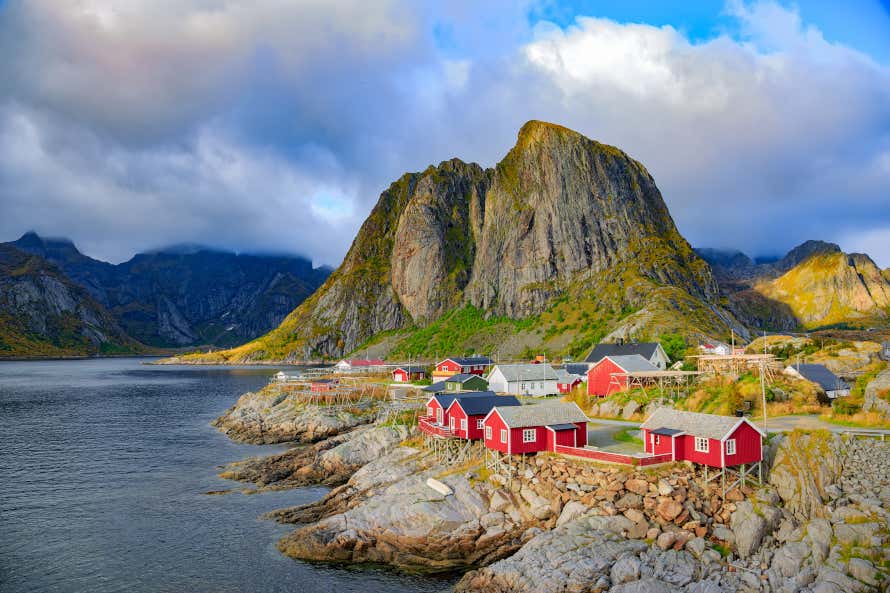
Reinebringen
If you’re travelling here in summer, climbing Reinebringen Mountain should definitely be on your to-do list. You only have to climb around 1,312 feet (400 metres) to admire breathtaking views. Ensure you have the right equipment and adequate footwear, as some areas may have snow and ice.
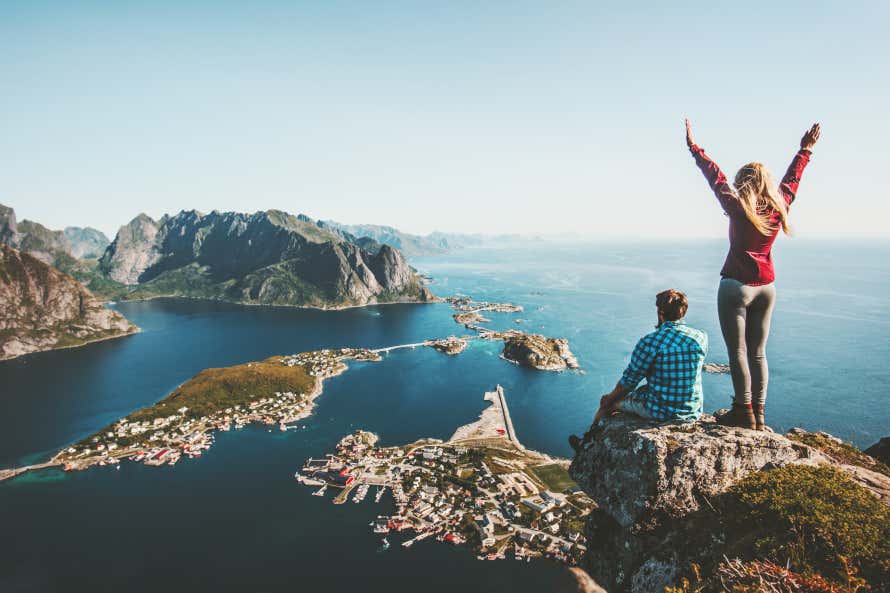
Trollfjord
Another popular place to see if you visit the Lofoten Islands is the Trollfjord, a small 1.2-mile (2-kilometre) fjord surrounded by rugged mountains. You can do plenty of activities in this dreamlike spot, such as taking a cruise, watching the beautiful white-tailed eagles or fishing.
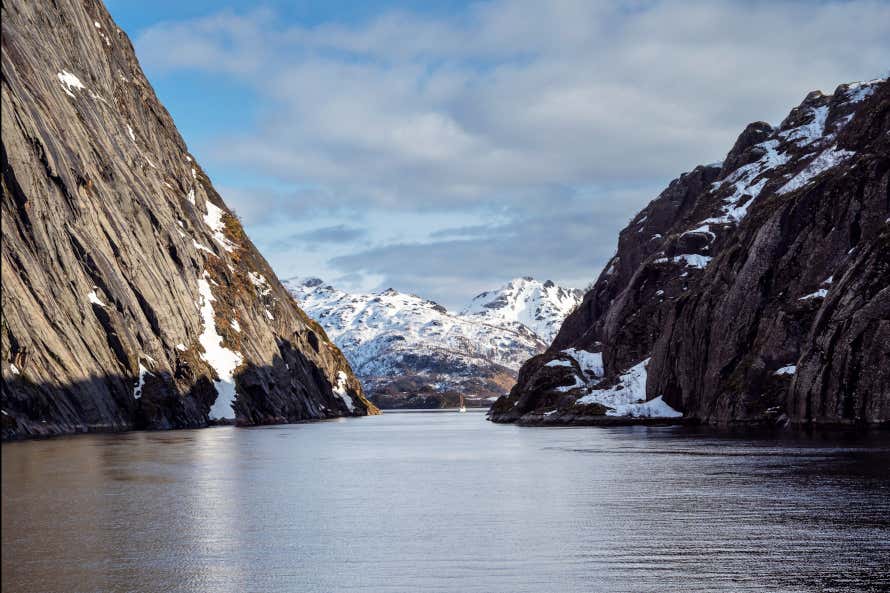
Flakstad, Haukland and Uttakleiv
These are three of the most beautiful beaches in the Lofoten Islands, both with and without snow. Haukland and Uttakliev are next to each other, the latter being one of the most famous beaches. There are two reasons for this: the stones that line the beach give it a fairytale feel, and this beach is also one of the best places to spot the Northern Lights as they dance across the sky.
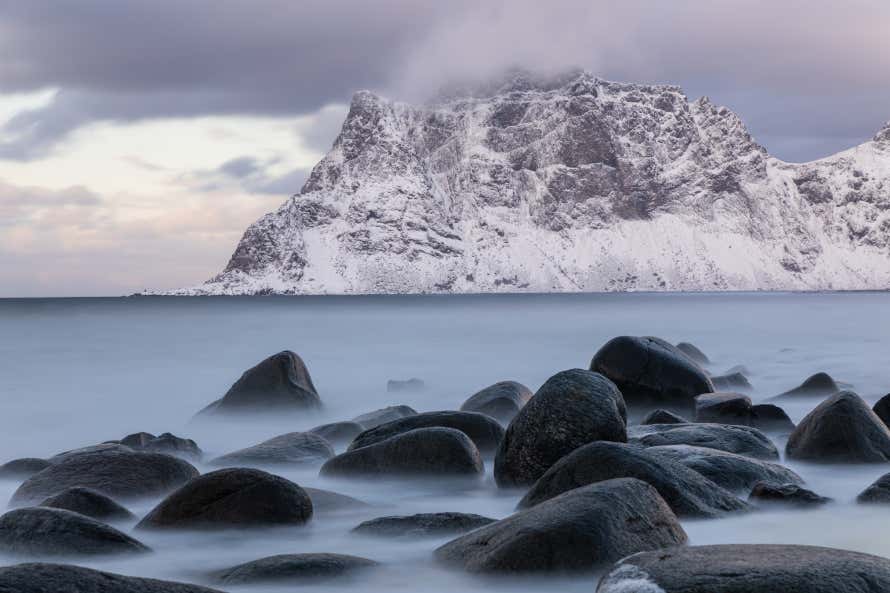
Svolvær
Svolvær is the capital and gateway to the Lofoten Islands. It’s the largest city in the archipelago and is surrounded by beautiful scenery, like most of the towns on these Norwegian islands. There are also some museums in Svolvær if you’re looking for some cultural immersion.
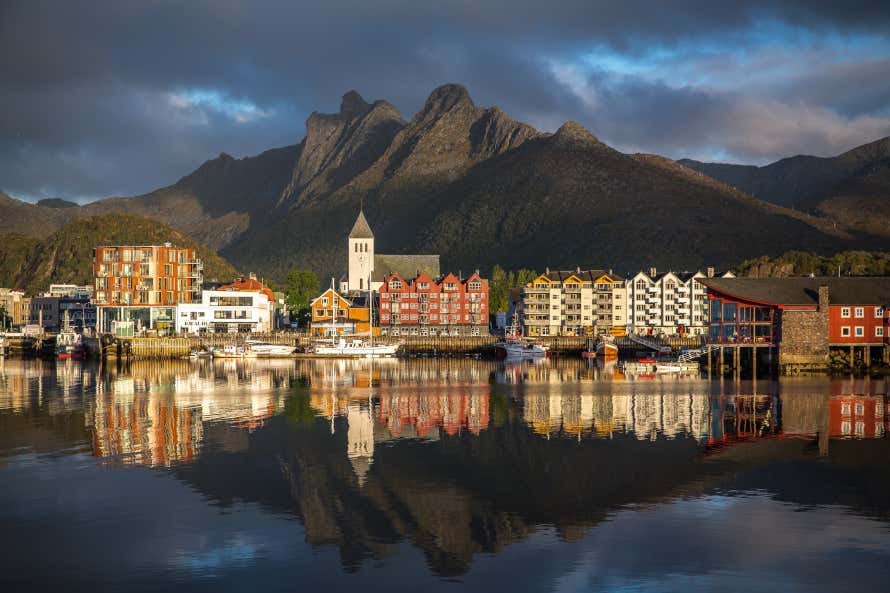
Vestvågøy, or “apple island”
The island of Vestvågøy, where the town of Leknes is located, is fascinating because it’s home to the only apple tree found on all the Lofoten Islands. This also makes it the only crop on the island. For this reason, Vestvågøy is also known as “apple island”, even though fishing is its primary source of income. Here, you can visit the traditional rorbu or cottages, which have been converted into holiday flats.
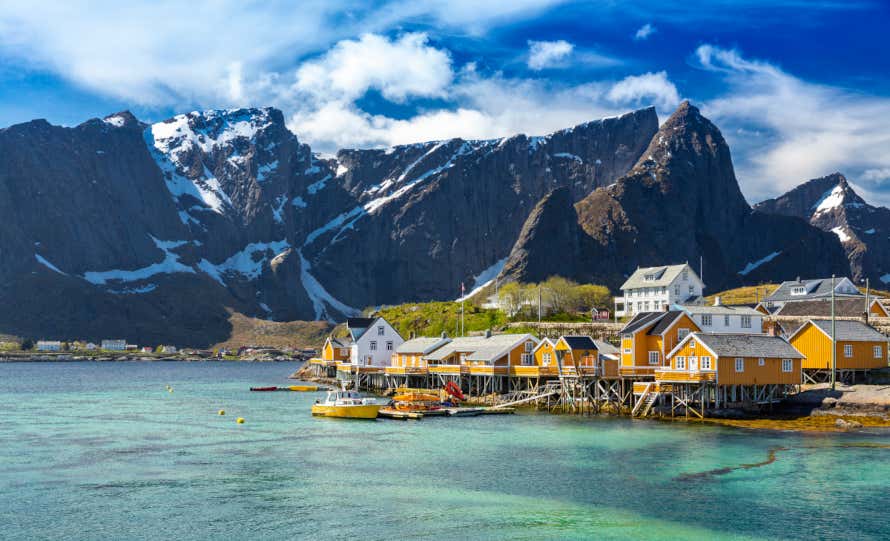
Now that you’ve got all the info from our guide to the Lofoten Islands, you can plan the perfect trip to this unique destination!




